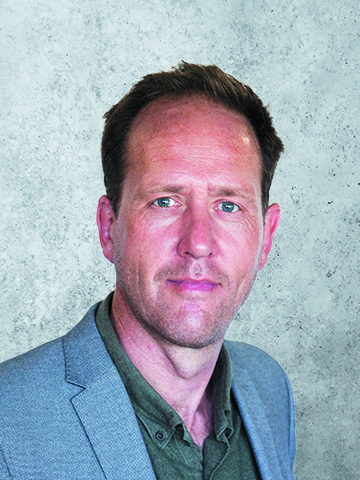The European Leg of The ChapmanCG Global HR Leaders Meetings Series Ends with Roundtables in Milan and Stockholm
The European Leg of The Chapman Consulting Group’s Global Series of HR Leaders Meetings have come to an end in style, firstly with our South Europe group meeting at Pirelli in Milan, Italy, and finally with our Scandinavia group meeting at Electrolux in Stockholm, Sweden. Attendees at these small groups included Global HR decision-makers from companies such as Autogrill, Benetton, Campari, Ermenegildo Zegna, Indesit, Intesa Sanpaolo, Parmalat, Maersk, ASSA ABLOY, AstraZeneca, Danfoss, Ericsson, Husqvarna and Stora Enso, to name just a few.

In order to preserve the anonymity of the information shared from these sessions, we will not be reporting on all the findings discussed. However below is a short summary of some of the most interesting points raised:
- One Italian manufacturing company has put together a very elaborate plan of individual career paths for its employee base in growth markets. The main driver for this was because the company wanted to move away from employees viewing compensation as the ‘be all and end all’ of attraction and retention, and had chosen to differentiate themselves from the market by offering a high degree of career development instead. This is done by offering a series of domestic and international projects, stretch assignments and job rotations.
- An Italian fashion brand has elected to include their Chinese business leader in China in overall global management meetings. This structural change has had a very positive knock-on effect in forcing the Executive Committee to ‘think global’ in their decision-making at the HQ level, and has also forced them to speak only English in these meetings.This was a great example of how structural design can fast-forward the development of a company’s global corporate culture.
- One Italian consumer goods company shared experiences of their successful entry into the Russia market. While the company was very successful in growing its business in Russia and achieving very high quality in manufacturing, there were significant problems in handling senior management, particularly in transparency of decision making at the senior level. These have been fixed through an ongoing process of checks and balances. But more broadly, the company has made the strategic decision to focus their energies on looking after the majority 90% of the workforce rather than spend too much on the top 10% of talent. This shift in focus away from the ‘high flyers’ and towards the foundational ‘backbone’ of the company has helped to engender a great culture of community and teamwork in the organisation from bottom-up.
- Meanwhile in Sweden, one of the key themes of the Scandinavia group of Global HR Leaders was: Simplicity. Many Global HR Leaders in the room agreed that there is still too much focus on HR as a process-oriented function rather than as a business integrator. However on the flip-side of this argument, it’s often a highly developed HR operational system running in the background that allows HR to simplify its offering to business stakeholders. The key take-away was in the communication strategy: When speaking with the business, don’t overcomplicate things with the detail of HR operational strategy, and distill things into their most clear and penetrable applications.
- Also on the theme of communication, many Scandinavian companies felt a great deal of pressure at the Global HQ level when they make decisions in growth markets which they wouldn’t do in other markets. One example given was a consumer company who had needed to fire 10% of its workforce in a South-East Asian country because of an illegal strike at the plant there. The incident was not an example of how the company operates, but was simply a product of the relative immaturity of the workforce in this country when compared with how industrial relations matters are dealt with in Europe. However it was a difficult balancing act to convince the Scandinavian media that they acted ‘fairly’, even though they did what any other multinational or local company in this Asian country would have done in this situation acting in accordance with local laws and practices. While we hear many stories of cultural insensitivity on the part of multinationals understanding local practices in Asia, this was a good example of when local decision-makers in Asia need to understand the wider ramifactions of local decisions at a global level.
- Finally, one Scandinavian technology company has recently moved away entirely from looking at the ‘cost’ of expat mobility and international talent rotation. While there’s no substitute for local hiring, the company also realises that it needs to continue to create a flow of ideas between countries and markets in order to continue innovating. So this kind of talent movement is not a cost, it’s a necessity. The ethos is that if this company isn’t doing it, then its competitors will.

Our networks of Global HR Leaders in South Europe and Scandinavia represent some of our most diverse contacts, so it’s been a great pleasure to end the European Leg of our Global HR Leaders Meeting Series in these two contrasting locations. Along with the groups that met together in Reading, London, Paris, Heerlen, Bonn, Munich and Lucerne, we’ve also found the insights fascinating and we hope that those who couldn’t attend have been able to gain some insights from these short write-ups.
The series now moves onto North America, where we will hold similar groups on both the West Coast and the East Coast of the U.S. We look forward to hearing more from Global HR Leaders in these locations to see if the same trends that we saw in Europe are being reflected in North America.
As a parting note, we at The Chapman Consulting Group are seeing more and more Global HR Leaders rise up the ‘food chain’ into Global roles from international placements in growth markets. We wonder whether the Global decision-makers that we meet at HQs today represent the last generation of leaders where it is still possible to gravitate into Global roles without having spent prolonged periods on the ground in either Eastern Europe, Africa, Latin America or Asia. With increasing percentages of global revenue now coming from these markets, it will make less and less sense to have global decision-makers who only know these geographies by association. In the future, these markets will need to be at the forefront of business and HR strategy, and not a mere afterthought. Something worth thinking about for HR executives currently planning their long-term career plans…
Key Contributors:
 Andrea Merrigan
Andrea Merrigan Orelia Chan
Orelia Chan Stanislav Medvedev
Stanislav Medvedev Fleur Daniell
Fleur Daniell Finian Toh
Finian Toh Tim Rayner
Tim Rayner Nicola Hasling
Nicola Hasling Stefanie Cross-Wilson
Stefanie Cross-Wilson
 René Rosso
René Rosso


